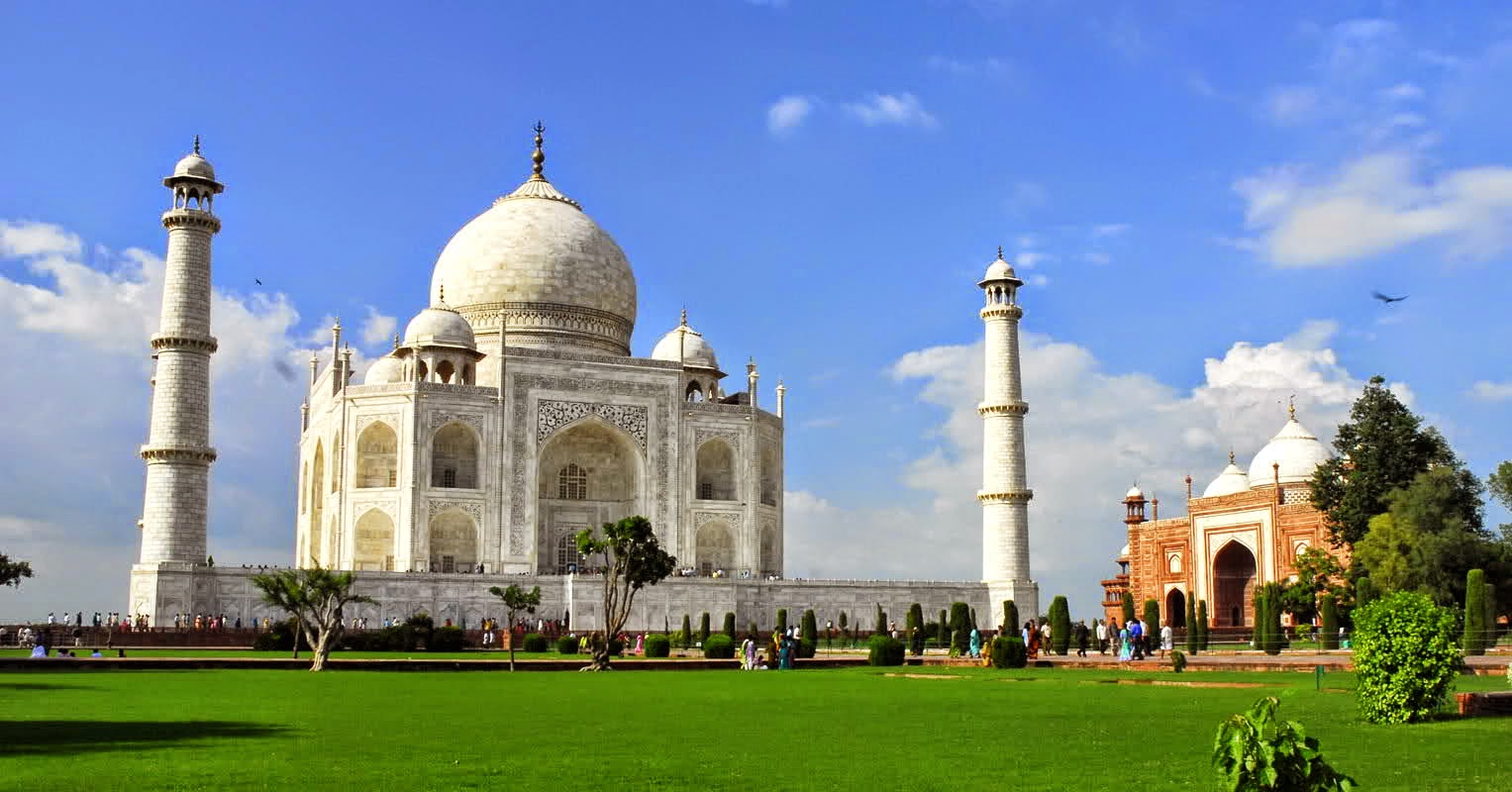The Taj Mahal World heritage in India
Dispatched in 1632 by the Mughal ruler Shah Jahan to house the remaining parts of his treasured spouse, the Taj Mahal remains on the southern bank of the Yamuna River in Agra, India. The celebrated internationally sepulcher unpredictable, worked over 20 years, is a standout amongst the most remarkable cases of Mughal design, which consolidated Indian, Persian and Islamic impacts. At its inside is simply the Taj Mahal, worked of sparkling white marble that appears to change shading contingent upon the daylight or moonlight hitting its surface. Assigned an UNESCO World Heritage site in 1983, it stays one of the world's most commended structures and a shocking image of India's rich history.

Taj Mahal: Shah Jahan's Romantic Gesture
Shah Jahan was an individual from the Mughal tradition that ruled the greater part of northern India from the mid sixteenth to the mid eighteenth century. After the demise of his dad, King Jahangir, in 1627, Shah Jahan developed the victor of an astringent power battle with his siblings, and delegated himself sovereign at Agra in 1628. Next to him was Arjumand Banu Begum, otherwise called Mumtaz Mahal ("Chosen One of the Palace"), whom he wedded in 1612 and valued as the most loved of his three rulers.

In 1631, Mumtaz Mahal kicked the bucket subsequent to bringing forth the couple's fourteenth tyke. The lamenting Shah Jahan, known for dispatching various noteworthy structures all through his rule, requested the working of a grand sepulcher over the Yamuna River from his own particular regal royal residence at Agra. Development started around 1632 and would proceed for the following two decades. The main planner was likely Ustad Ahmad Lahouri, an Indian of Persian plunge who might later be credited with outlining the Red Fort at Delhi. Taking all things together, more than 20,000 laborers from India, Persia, Europe and the Ottoman Empire, alongside around 1,000 elephants, were gotten to fabricate the catacomb complex.

Outline and Construction of the Taj Mahal
Named the Taj Mahal out of appreciation for Mumtaz Mahal, the tomb was developed of white marble trimmed with semi-valuable stones (counting jade, precious stone, lapis lazuli, amethyst and turquoise) shaping perplexing outlines in a system known as pietra dura. Its focal vault achieved a tallness of 240 feet (73 meters) and was encompassed by four littler arches; four thin towers, or minarets, remained at the corners. As per Islamic custom, verses from the Quran were recorded in calligraphy on the angled doors to the tomb, notwithstanding various different segments of the complex. Inside the sepulcher, an octagonal marble chamber enhanced with carvings and semi-valuable stones housed the cenotaph, or bogus tomb, of Mumtaz Mahal. The genuine sarcophagus containing her real stays lay beneath, at cultivate level.

Whatever is left of the Taj Mahal complex incorporated a principle portal of red sandstone and a square garden separated into quarters by long pools of water, and also a red sandstone mosque and an indistinguishable building called a jawab (or "mirror") specifically opposite the mosque. Customary Mughal building practice would enable no future modifications to be made to the complex. Supposedly, Shah Jahan expected to fabricate a moment fabulous tomb over the Yamuna River from the Taj Mahal, where his own remaining parts would be covered when he passed on; the two structures were to have been associated by an extension. Actually, Aurangzeb (Shah Jahan's third child with Mumtaz Mahal) ousted his feeble father in 1658 and took control himself. Shah Jahan experienced the most recent years of his life under house capture in a tower of the Red Fort at Agra, with a perspective of the great resting place he had built for his better half; when he passed on in 1666, he was covered alongside her.

The Taj Mahal Over the Years
Under Aurangzeb's long govern (1658-1707), the Mughal realm achieved the stature of its quality. Notwithstanding, his aggressor Muslim strategies, including the pulverization of numerous Hindu sanctuaries and holy places, undermined the persevering quality of the realm and prompted its destruction by the mid-eighteenth century. Indeed, even as Mughal control disintegrated, the Taj Mahal experienced disregard and decay in the two centuries after Shah Jahan's passing. Close to the turn of the nineteenth century, Lord Curzon, at that point British emissary of India, requested a noteworthy reclamation of the sepulcher intricate as a component of a provincial push to save India's imaginative and social legacy.
Today, somewhere in the range of 3 million individuals every year (or around 45,000 a day amid crest visitor season) visit the Taj Mahal. Air contamination from close-by industrial facilities and autos represents a constant danger to the sepulcher's glimmering white marble façade, and in 1998, India's Supreme Court requested various against contamination measures to shield the working from weakening. A few industrial facilities were shut, while vehicular activity was restricted from the quick region of the complex.

The conclusion is that Taj Mahal is a symbol of true love
Amazing post my friend!I write very interesting post about my excursion in adult life! Looks please!
https://steemit.com/life/@bugavi/excursion-bugavi-in-adult-life-smoke-eyes-shoes-from-gucci-wolkswagen-car-and-modern-hairdo-let-s-go-with-me
Hello! I just upvoted you! I help new Steemit members! Upvote this comment and follow me! i will upvote your future posts! To any other visitor, upvote this post also to receive free UpVotes from me! Happy SteemIt!
Congratulations @palashsaha! You have completed some achievement on Steemit and have been rewarded with new badge(s) :
Click on any badge to view your own Board of Honor on SteemitBoard.
For more information about SteemitBoard, click here
If you no longer want to receive notifications, reply to this comment with the word
STOP